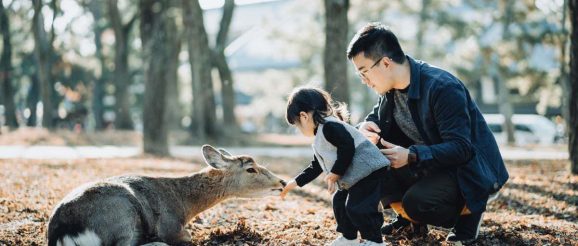Inconsistent human behaviour around animals putting wildlife at risk | New Scientist

Feeding wild animals might give them the misleading impression that all humans will offer assistance
d3sign/Getty Images
Well-meaning humans might be inadvertently putting wildlife in danger by being kind and generous, in a world where not all humans are kind and generous.
Wild animals might quickly learn whether humans are trustworthy, based on their own experiences and those of their group members. But different humans act differently towards animals – and these “mixed messages” put animals at risk of trusting the wrong humans, says Madeleine Goumas at the University of Exeter, UK.
“When we feed wild animals, for example, it feels nice for us, and it’s a selfless thing we’re doing,” she says. “But we don’t know later on if that animal is going to wander up to someone who’s not going to be as appreciative.”
Read more: Scared to death: How intimidation changes ecosystems
Goumas and her colleagues have developed a computer model to assess how wild animals cope with the mixed messages that humans send out. The model allows for animals to learn information about humans in different ways – by learning from observing other animals, for instance – and at different speeds. It also allows for human populations containing different mixes of friendly or hostile people, and gives the animals different abilities to recognise and remember which humans were which.
The model suggests that animals that learn rapidly whether to trust humans are better able to survive in places where humans generally act in the same way – either being friendly or hostile to animals – says Goumas. Transferring those findings to the real world means, for example, that deer can take advantage of more grazing grounds in urban areas, where people leave them alone or are even friendly to them. Deer living in wooded areas that are popular among hunters, meanwhile, can survive better by quickly learning to hide from people.
However, the model also suggests that fast learning in places where different people in the human population have different attitudes towards wild animals can be detrimental, says Goumas. The simulated animals in these environments quickly made conclusions about all humans based on a single good or bad experience. “We tend to think ‘learning quickly sounds good’, and that it must always be better,” she says. “But the problem is … it can be a bit excessive.”
The model suggests that being capable of clearly recognising individual humans as friendly or hostile isn’t always beneficial, says Goumas. This is because by learning about each new person individually, rather than generalising, she says, animals can waste valuable time that would be better spent either taking advantage of available resources, or fleeing imminent danger.
Not all species are capable of individual recognition of humans anyway – although well-meaning humans sometimes make such dangerous assumptions, says Goumas.
“I’ve seen people on social media saying, ‘Oh it’s fine to feed these animals, because they know me, and they wouldn’t go up to other people’,” she says. “But you just don’t know that. It’s putting them [the animals] in a very vulnerable position, especially when we still really don’t know much about how animals are perceiving us.”
Journal reference: Royal Society Open Science, DOI: 10.1098/rsos.211742
More on these topics:
